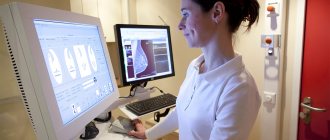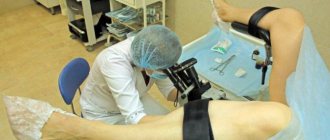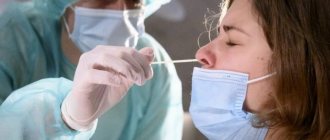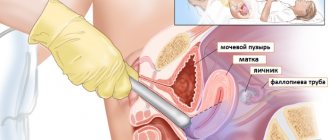Today, more than a third of the adult population of the planet suffers from various hepatopathies (liver diseases).
Meanwhile, it is truly impossible to overestimate the importance of the liver for human health and life. This organ produces bile necessary for digestion; participates in blood circulation processes, lipid, carbohydrate, water-salt, protein, vitamin metabolism; neutralizes toxic and infectious agents; performs a number of other physiological functions.
Liver diseases occur for many reasons: against the background of existing chronic ailments, hereditary diseases and immune disorders, due to bacterial, viral and parasitic infections, intoxication, abdominal injuries, addictions, unhealthy diet, etc.
Signs of liver disease
Any diagnosis begins with identifying symptoms specific to a particular disease. Unfortunately, in the case of liver pathologies, early self-detection of alarming signs by a person is practically impossible, since the main symptom – pain – is absent. The fact is that the organ does not have nerve endings that are responsible for the occurrence of pain. And obvious manifestations of the disease occur already in advanced forms of the disease.
Signs of liver problems:
- increased fatigue, decreased performance;
- sleep problems;
- swelling;
- frequent attacks of nausea and vomiting;
- a feeling of bitterness in the mouth;
- yellow coating on the tongue;
- feeling of heaviness, discomfort in the right hypochondrium;
- yellowness of the skin and mucous membranes;
- dry skin and mucous membranes;
- change in urine color (darkening);
- increased frequency of bowel movements, discoloration of stool.
People planning a vacation in Asian and African countries are recommended to be vaccinated against hepatitis A. Representatives of professions with a high risk of contracting hepatitis B (medics, employees of tattoo parlors, etc.) should be vaccinated against this dangerous virus.
How dangerous is hepatitis for humans?
The content of the article
Any pathology developing in the liver is a serious cause for concern. This organ is a kind of filter that cleanses the blood of toxins. The liver removes toxic compounds from the body or neutralizes their effect. The diseased liver cannot cope with its functions, and the body is gradually poisoned.
Hepatitis is an insidious disease that leads to cirrhosis and liver cancer, so they need to be urgently identified and treated. Both cirrhosis and liver cancer are virtually incurable.
Diagnosis of liver diseases
Timely examination will help identify pathology at the initial stage and choose the best treatment tactics.
Diagnosis of hepatopathy is within the professional competence of a gastroenterologist, but often a patient comes to this specialist from a therapist - after contacting him about a general deterioration in well-being and a decrease in vitality. (As we have already mentioned, liver diseases at an early stage may not have pronounced symptoms).
After interviewing the patient, the doctor examines his skin and palpates the liver to assess whether the shape and size of the organ have changed. The patient may be recommended to consult with specialists in “allied” medical fields (gastroenterologist, infectious disease specialist, immunologist, dermatologist, etc.), depending on the causes of the disease and to prevent possible complications.
What tests should I take to check my liver health?
The key stages of the examination are instrumental and laboratory diagnostics.
Instrumental methods for diagnosing liver diseases include:
- Ultrasound of the liver and abdominal organs;
- elastography;
- CT;
- MRI;
- liver biopsy.
Laboratory tests usually include:
- general blood analysis;
- general urine analysis;
- coprogram (stool analysis);
- biochemical blood test with liver tests;
- coagulogram;
- enzyme immunoassays;
- analysis for markers of viral hepatitis (A, B, C, D, E);
- analysis for tumor markers.
General blood analysis . This study reflects the processes occurring in the body as a whole. A high white blood cell count may indicate existing inflammation. A decrease in platelet concentration indicates decreased activity of liver cells, which is typical for viral hepatitis. An increase in erythrocyte sedimentation rate is characteristic of infectious liver lesions.
General urine analysis . A test that provides information about health in general, and also helps to detect hidden diseases, which can be signaled by the presence of glucose, protein, blood cells in the urine, as well as changes in specific gravity, acidity, color, transparency and other indicators.
General stool analysis . According to the data of this test, processes occurring in the digestive organs and throughout the body are judged. The consistency, color, and smell of feces matter (stage of macroscopic study). During a chemical study, the presence of protein, pH, bilirubin, and stercobilin is determined. Microscopy of biomaterial can reveal particles of mucus, blood, the presence of a parasitic infection, etc.
Blood chemistry . The study provides answers about liver function, the presence of inflammatory phenomena, the state of hepatocytes, and the patency of the bile ducts. The test determines the concentration of albumin and other proteins, different fractions of bilirubin, transferases (ALT, AST, GTT) and alkaline phosphatase. Samples help diagnose hepatitis, cirrhosis, tumors, and other diseases of the liver and biliary tract.
Analysis for markers of viral hepatitis . The test determines the presence in the blood of specific antibodies (viral hepatitis A, B, C, D, E) to certain protein compounds that are components of viruses. Antibodies are produced if a person has already had hepatitis or has an acute stage of the disease.
Examination of the esophagus, stomach and duodenum
Basic examinations of the stomach, esophagus and duodenum: esophagogastroduodenoscopy (gastroscopy, endoscopy), respiratory urease test, etc.
Examination of the stomach, esophagus and duodenum in our clinic is carried out in three directions:
- Study of the structure and structure of the esophagus, stomach and duodenum;
- Study of the functions of the esophagus, stomach and duodenum;
- Examination of the esophagus, stomach and duodenum for infection.
Study of the structure and structure of the esophagus, stomach and duodenum. By studying the structure, structure and anatomical properties of the stomach and duodenum, we set ourselves the task of finding out whether the structure of the stomach is normal, how the upper parts of the gastrointestinal tract are formed, determining the presence or absence of neoplasms (cysts, polyps, etc.), finding out whether whether an inflammatory or atrophic process, ulcers, erosions, bile reflux, signs of parasitic diseases (including giardiasis). Also, during gastric endoscopy, you can take an analysis for the causative agent of peptic ulcer - Helicobacter. To obtain the most accurate results, we recommend certain preparations for gastroscopy of the stomach.
- Esophagogastroduodenoscopy (EGD, gastroscopy , gastroscopy of the stomach) is the most informative method of visualized examination of the esophagus, stomach and duodenum. Gastroscopy is the best way to visually examine the stomach.
- If necessary, we will conduct a biopsy and test for Helicobacter pylori infection.
- CT and MRI scans are more advanced tests of the gastrointestinal tract (including the esophagus, stomach and duodenum). Using computed tomography, the condition of the esophagus, stomach, duodenum and lymph nodes located in the immediate vicinity is assessed.
Study of the functions of the esophagus, stomach and duodenum
- When studying the function of the esophagus, stomach and duodenum, X-ray examination with contrast . It allows you to evaluate the function of swallowing, movement of the food bolus through the esophagus, filling function, evacuation of stomach contents into the duodenum, etc.
The x-ray shows a stomach filled with contrast, there is a gas bubble in the stomach, and signs of a hiatal hernia are visible
- Study of stomach acidity (pH-metry). Gastric acidity and its deviations from the norm make it possible to assess the nature of the disease: gastritis with high acidity, gastritis with low acidity (atrophic gastritis).
Examination of the esophagus, stomach and duodenum for infection
- The urease breath test helps us detect the presence of Helicobacter pylori (the bacterium that causes stomach ulcers). The urease breath test allows you to detect bacterial waste products in the exhaled air;
- Immunological examination of blood for antibodies to infections (Helicobacter pylori) and parasites (giardiasis);
- Determination of antibodies to infections in feces (including antibodies to Helicobacter pylori).
Diagnosis of Helicobacter pylori infection, urease breath test (helic test)
Your attending physician will advise you individually about gastroscopy of the stomach (including preparation for gastroscopy of the stomach) and other studies. We will try to make gastroscopy of the stomach as comfortable as possible for you.
Preparation for analysis
Blood test : blood from a vein must be taken on an empty stomach (do not eat, do not smoke), 8 to 14 hours must pass from the last meal. You can drink some clean water. On the eve of the analysis, you should not overexert yourself physically and mentally, or consume heavy food or alcohol.
Stool and urine tests : to collect biomaterial, disposable containers should be purchased at the pharmacy. On the eve of testing, you should not consume coloring foods (beets, carrots, etc.), activated carbon, laxatives and diuretics.
For urine analysis, morning urine is taken, that is, urine accumulated in the bladder during night sleep. After performing a thorough toilet of the external genitalia and releasing the first portion of urine into the toilet, you need to collect the middle portion in a container. It is advisable to collect feces in the morning or no later than 8 hours before the test.
Comprehensive diagnosis of liver diseases in MedikCity
- Diagnostics of liver function: Alanine aminotransferase;
- Aspartate aminotransferase;
- Bilirubin total;
- Bilirubin direct;
- Gamma-glutamyl transferase;
- Total protein + protein fractions;
- Alkaline phosphatase;
- Primary diagnosis of hepatitis;
- Alanine aminotransferase;
- Hepatitis A, B, C, D, E Virus (Hepatitis A, B, C, D, E Virus), qualitative determination of IgM class antibodies;
At the Medixity clinic, you can undergo a complete diagnosis of liver diseases and other examinations that interest you on a convenient day and time that suits you. Gastroenterologists are seen daily. Our professionalism and experience are at your service!
Liver tests interpretation
Normal liver indices depend on the age and gender of the patient. The doctor does not always make a “verdict” after alarming abnormalities in the tests have been noted - often the test is repeated after a certain period of time.
The norm of liver enzymes is given in the table, which can be viewed below:
| Indicators | Men | Women |
| AST | Up to 47 U/l | Up to 31 U/l |
| ALT | Up to 37 U/l | Up to 31 U/l |
| GGT | Up to 49 U/l | Up to 32 U/l |
| Total bilirubin | 8.5 - 20.5 µmol/l | 8.5 - 20.5 µmol/l |
| Direct bilirubin | Up to 15.4 µmol/l | Up to 15.4 µmol/l |
| Bilirubin indirect | Up to 4.6 µmol/l | Up to 4.6 µmol/l |
| Total protein | 60 - 80 g/l | 60 - 80 g/l |
| Albumen | 40-60% | 40-60% |
What does a hepatitis test show?
There are 2 possible answers in the analysis results:
- The wording in the conclusion is “negative result” - no RNA virus was detected, no infection. A negative response indicates that there was no reaction to the presence of the appropriate type of antigen.
- The wording in the description of the test “positive” indicates the need for a repeat examination to clarify the result and presumably that the person is seriously ill.
The results also indicate which virus is present in the liver.









